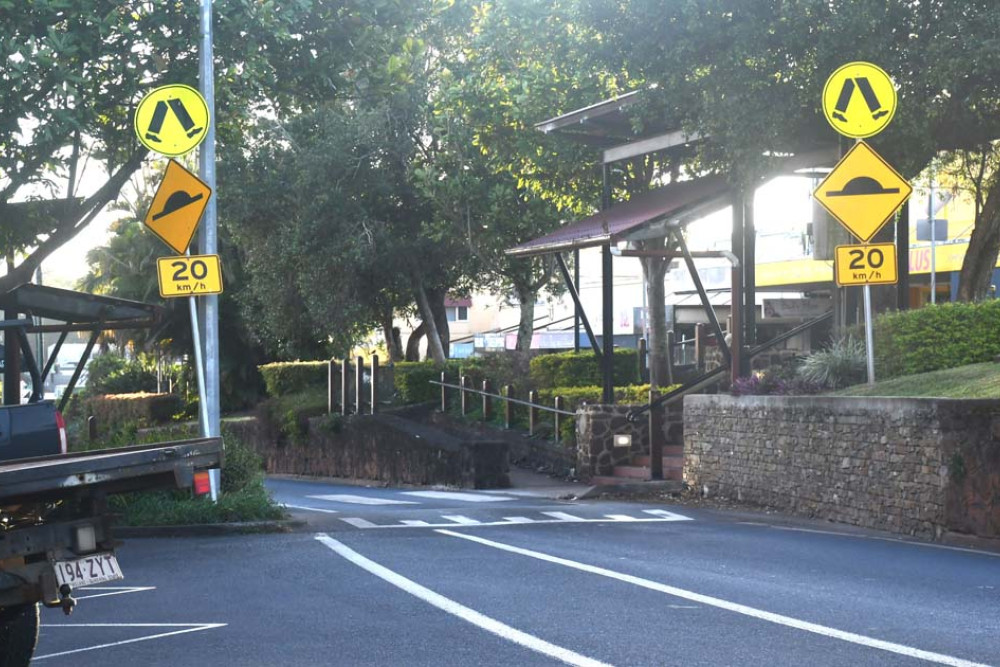Community & Business
26 July, 2024
Improvements proposed for Tablelands accessibility
ACCESSIBILITY for people with disabilities across the Tablelands region has been put under the microscope, with a Spinal Life Triple A report highlighting several destinations with room for improvement.

Conducted under a team of accessibility and inclusion consultants, the study assessed Atherton, Malanda, Millaa Millaa, Herberton, Ravenshoe, Tolga, and Yungaburra, along with Herberton Historical Village and the Tinaroo Foreshore, for barriers holding back people with mobility restrictions.
The report was tabled to Tablelands Regional Council following a deputation by ECHO Empowering Service community development officer Belinda Moore, Disability Matters representative Melitta Lewis, and Tinaroo Holiday Park director Lachlan Farquharson, who referred to it in March.
The report highlights the significant lack of public transport in the region, severely limiting residents, especially those with disabilities, from fully participating in community life.
Many older buildings and infrastructure in the Tablelands do not meet current Australian Disability Access Standards, creating physical barriers.
The report urges integrating accessibility into public infrastructure planning to create more inclusive environments.
Atherton’s CBD faces major accessibility issues, with navigability problems and poor connectivity between key areas.
At the Tinaroo Foreshore, while holiday park enhancements improve accessibility, the area lacks accessible parking, pathways, and toilets.
Herberton needs more accessible parking despite its historical village having several accessible features, which require better signage and promotion.
In Malanda, steep ramps and high steps in shops on James and English Street hinder access for people with mobility issues.
The report suggested that Millaa Millaa needed more safe pedestrian crossings, while Ravenshoe was praised for its new accessible infrastructure, but it still requires safe street crossings.
Tolga and Yungaburra have disconnected pathways, complicating navigation for those with mobility issues.
During the meeting, council agreed to endorse the report, with Cr Kylie Lang saying she thought it was very important to the region
“The Tablelands area is a very inviting and sort out area for everyone from all walks of life, so I do believe we need to make this an inclusive and accessible region for everybody so I fully support this,” she said.
Cr Kevin Cardew however, was concerned the recommendations about what the recommendations would be, asking officer Hilary Jackson what the next steps would be.
Ms Jackson reassured Cr Cardew the report would The report will now be tabled at the Youth and Inclusion Advisory committee, where they will look at the recommendations and discuss the best way forward to solve the issues.
“There are a lot of ground proofings that need to be done with the recommendations in this report, so that work will take place behind the scenes with the advisory committee and then we will come back and workshop with council any recommendations that were made.,” she said.
Cr Bilney also showed his full support for the report, echoing Cr Lang’s sentiments.
“There has been substantial discussions with different agencies externally in TRC, so I support taking this further and the advisory committees will make recommendations to council of what projects will fall out of this,” he said.
“It is a part of the ‘everybody’s welcome here’ situation, but I see this as the natural involvement of inclusion that Cr Lang mentioned.”
The council moved to endorse the Spinal Life report, while officers engaged the TRC Youth and Inclusion committee to consider and ground-proof each recommendation to the council.
Key Observations
Public Transport: An absence of public transport across the region limits the ability of all people and people with disabilities to access and participate in community life independently. The lack of accessible transportation options emerges as a significant barrier to mobility and social inclusion.
Older Infrastructure: The region's older buildings and infrastructure are inherently present. access challenges. These structures are often no longer compliant with current Australian Disability Access Standards, resulting in physical barriers that impede free and equitable access for all community members.
Standard Practice in Public Infrastructure: Accessibility considerations should be considered in the planning and delivery of public infrastructure. This leads to inclusive environments, improving compliance against current Australian Disability Access Standards such as Tactile Ground Surface Indicators (TG5|s) on ramps and stairs, handrails, and well-designed and positioned kerb ramps, which reduce hazards at street
crossings.
Education and Awareness: There is a need for ongoing education on disability awareness within council and the broader business community. Raising awareness and understanding accessible sues is crucial for fostering an inclusive culture and encouraging proactive measures.


